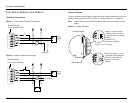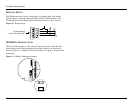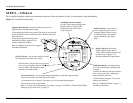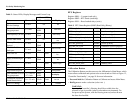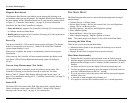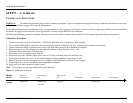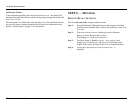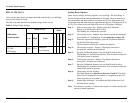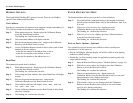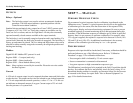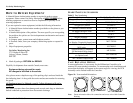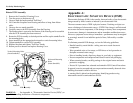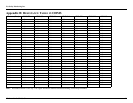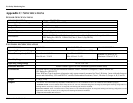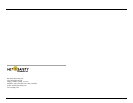
Net Safety Monitoring Inc
MLP-A/AR/AD-ST1400-25 18
OUTPUTS
Relays - Optional
Note: The fault relay output is not used to activate an automatic shutdown
procedure. The fault output indicates a potential problem with the
Controller not an alarm condition.
Standard electro-mechanical relay outputs have Form C SPDT contacts rated
5 Amperes at 30 V dc/ 250 V ac. Three relay outputs are available; one for
Fault; one for Low alarm; and one for High alarm. All relays have normally
open and normally closed contacts available at the output terminals.
The fault relay is set for normally energized operation and is non-latching. If a
system fault is detected, the fault relay becomes de-energized. The fault relay is
factory set and cannot be altered. The Low alarm and High alarm relays can be
selected for either normally energized or normally de-energized operation and
latching/non-latching.
Modbus
Digital RS-485 Modbus RTU protocol is used.
Register 40001 = % output (read only)
Register 40002 = Status (read only)
Register 40101 = Reset latched alarms (write)
Note: Many registers are used by the controller. Please do not write outside
the three registers.
Current
A 4-20 mA dc current output is used to transmit the alarm status and fault codes
to other devices. This output can be wired for isolated or non-isolated operation.
A 17.4 mA output indicates normal operation; a value >17.4 or <17.4 mA out-
put indicates an abnormal amount of oxygen. Current output of 2.5 mA indi-
cates the presence of a system fault.
STEP 7 — MAINTAIN
PERIODIC RESPONSE CHECK
We recommend a typical response check or calibration is performed on the
Millennium every 3 months. A typical response check involves the application
of calibration gas to the sensor, then the observation of the response LEDs,
analog output, display and external monitoring equipment. Be sure to prevent
unwanted response of external monitoring devices and equipment during this
procedure. If the Millennium response to calibration gas is within its specified
accuracy then it is not necessary to perform a calibration. For example, when
12% oxygen is applied, the response is expected to be between 10.4 mA (10%
O2) and 12.96 mA (14% O2). An additional consideration is the accuracy
tolerance of the calibration gas which may be + or - a few percent.
TROUBLESHOOT
Response to the input should be checked and, if necessary, calibration should be
performed whenever any of the following occur. Refer to "Calibration
Procedure" on page 13 for calibration instructions.
• Excess negative drift is indicated by 2.5 mA current output
• Sensor or transmitter is connected or disconnected
• Long term exposure or high concentration exposure to gas
The Millennium is not designed to be repaired in the field. If a problem should
develop, first calibrate the device and carefully check for faulty wiring. If it is
determined that the problem is caused by an electronic failure, the device must
be returned to the factory for repair. Refer "How to Return Equipment" on
page 19 for detailed instructions.



